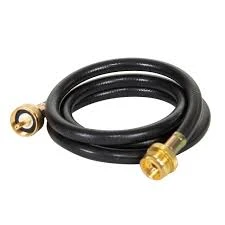335345435
Sep . 12, 2024 05:13 Back to list
Types of Hydraulic Hose Pipes - Comprehensive Guide
Types of Hydraulic Hose Pipes
Hydraulic systems are integral to various industries, from construction and manufacturing to automotive and aerospace. At the heart of these systems lies the hydraulic hose pipe, a crucial component responsible for transmitting fluid power. Understanding the different types of hydraulic hose pipes is essential for selecting the right one for your application.
1. Rubber Hydraulic Hoses One of the most common types, rubber hydraulic hoses are favored for their flexibility and durability. These hoses are typically reinforced with synthetic fibers or steel wire, making them suitable for high-pressure applications. They are available in varying diameters and lengths, which allows for versatility in installation and usage.
Types of Hydraulic Hose Pipes
3. Wire-Braided Hoses Wire-braided hydraulic hoses incorporate braided steel wire to enhance their strength and resistance to high pressure. These hoses are designed for heavy-duty applications, capable of withstanding extreme conditions. They are commonly used in sectors such as agriculture, mining, and construction, where reliability and durability are paramount.
types of hydraulic hose pipe

4. Spiral-Wound Hoses For the most demanding conditions, spiral-wound hoses are engineered to handle the highest pressure levels. They are constructed with multiple layers of high-strength steel wire, spiraled around each other. This design provides exceptional resistance to pressure and damage, making them suitable for industries that require robust hydraulic solutions.
5. PVC Hydraulic Hoses Polyvinyl Chloride (PVC) hoses are lightweight and flexible, making them a cost-effective option for low-pressure applications. While they are not as durable as rubber or thermoplastic hoses, they are resistant to corrosion and can be used in various fluid transfer operations. Their affordability makes them popular in agricultural and garden applications.
6. Specialty Hoses Depending on specific operational requirements, there are specialty hydraulic hoses designed to tackle unique challenges, such as extreme temperatures or chemical exposure. These hoses are engineered to meet specific standards and regulations, ensuring they perform optimally in challenging environments.
In conclusion, selecting the appropriate hydraulic hose pipe involves considering the application, pressure requirements, and environmental factors. By understanding the different types available, users can make informed choices to enhance their hydraulic systems' efficiency and longevity.
-
SAE 100 R17 Black Smooth Cover Hydraulic Hose
NewsMar.07,2025
-
SAE 100 R17 Black Smooth Cover Hydraulic Hose
NewsMar.07,2025
-
SAE 100 R17 Black Smooth Cover Hydraulic Hose
NewsMar.07,2025
-
SAE 100 R17 Black Smooth Cover Hydraulic Hose
NewsMar.07,2025
-
SAE 100 R17 Black Smooth Cover Hydraulic Hose
NewsMar.07,2025
-
steel wire braided hydraulic hose
NewsMar.07,2025



